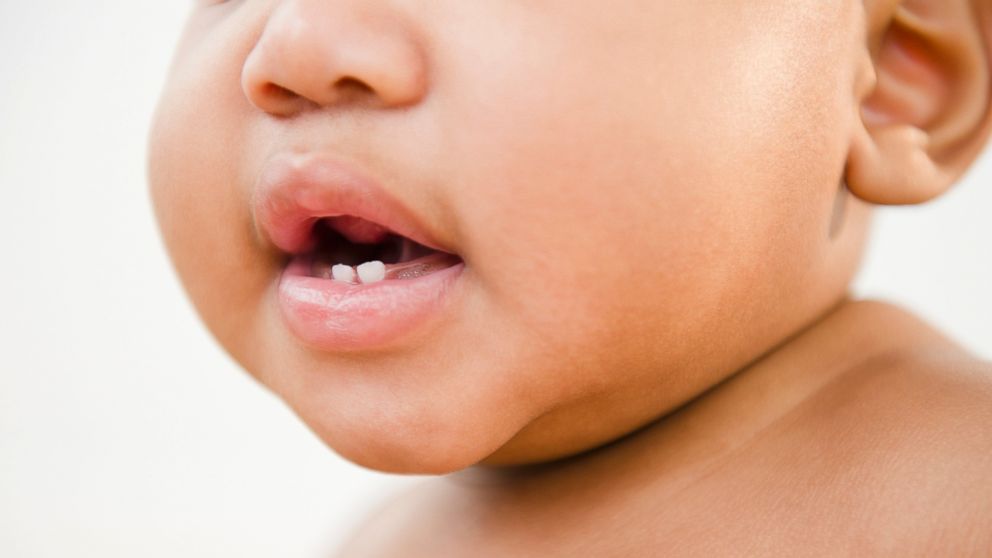Baby teeth show how exposure to various metals may be linked to autism, study finds
The small study of twins indicated metal levels at times before and after birth.

— -- Understanding why some children develop autism and others -- sometimes even their twins -- do not has stymied researchers for decades, but a new study says that baby teeth may provide some clues.
The new study published in Nature Communications sheds light on some possible factors in autism risk, revealed in children's teeth: exposure to various metals, both toxic and nutritional, like lead and zinc and the changes in exposure at different stages in a child’s development.
The small study examined baby teeth from 32 sets of twins to see if levels of lead and other metals correlated with an increased risk of developing autism. Autism spectrum disorder continues to affect 1 to 2 percent of all children born in Europe, North America and other developed regions, according to the study authors.
Though much research has been done in the field, there has been little study about how specific environmental factors can affect autism risk.
"We think autism begins very early, most likely in the womb, and research suggests that our environment can increase a child's risk. But by the time children are diagnosed at age 3 or 4, it's hard to go back and know what the moms were exposed to," Cindy Lawler, Ph.D., head of the NIEHS Genes, Environment, and Health Branch, said in a statement released today. "With baby teeth, we can actually do that."
In the study, researchers from the Icahn School of Medicine at Mount Sinai examined whether exposure to certain metals, identified in the matrix of baby teeth, showed an association with autism risk.
Researchers recruited twins from a national database of twins in Sweden to get a better understanding of how patterns of metal uptake compared among children both diagnosed and not diagnosed with autism spectrum disorder.
The study was led by Manish Arora, Ph.D., an environmental scientist and dentist at the Icahn School of Medicine at Mount Sinai in New York. With support from the National Institute of Environmental Health Sciences (NIEHS), Arora and colleagues had previously developed a method that used baby teeth that had fallen out normally to measure children's exposure to lead and other metals while in the womb and during early childhood.
Researchers use lasers to extract precise layers of dentine, the hard substance beneath tooth enamel, for metal analysis.
"What is needed is a window into our fetal life," he said. "Unlike genes, our environment is constantly changing, and our body's response to environmental stressors not only depends on just how much we were exposed to, but at what age we experienced that exposure."
The researchers looked at metals that are key nutrients such as zinc and manganese, as well as toxic metals like lead. They were also able to estimate at what point in the child’s development they were exposed to certain metals and at what levels.
They used baby teeth from 32 pairs of twins to establish a pattern of metal uptake. Of these 32 pairs of twins, six had only one twin with autism spectrum disorder, seven had both twins had autism spectrum disorder and 19 were unaffected by autism spectrum disorder. The researchers found smaller differences in the metal intake patterns when both of the twins had autism. They found significant differences in pairs where one sibling was diagnosed with autism.
The researchers were able to show differences in six metals including lead, zinc, tin, chromium and manganese out of the ten metals studied and autism rates. Both lead and manganese, which were statistically significant in how they related to autism risk.
Lead levels were consistently higher from 10 weeks before birth to 20 weeks after birth in children with autism spectrum disorder than their non-autism spectrum disorder counterparts.
The greatest difference was observed at 15 weeks after the twins were born: lead levels were 1.5 times higher in children with autism spectrum disorder than in their co-twins.
Manganese levels were consistently lower in children with autism spectrum disorder during two critical windows: 10 weeks prenatal to birth and then 5 to 20 weeks after birth. The greatest difference was noted at 15 weeks, when manganese levels were 2.5 times lower in autism spectrum disorder cases.
Previous studies have shown mixed results about autism and exposures to metals, especially lead, but many are limited by the range of other factors, including genetics, that could influence the disorder. By studying twins, researchers hoped to eliminate genetics as a factor and isolate metal exposures from the environment.
This study includes a small group of children. But researchers were encouraged by the findings, which could help shed more light on the origins of autism and establish further guidelines for medical providers to give worried parents about exposures to metals.
"We have identified the time period when we are most susceptible," Arora said. "We hope to be able to provide clinical recommendations to help as we continue to do more research."




